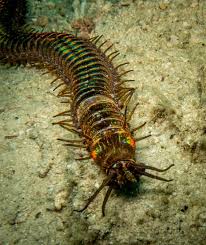INTRODUCTION OF UPPER LIMBS
The fore and hindlimbs were basically evolved basically for bearing the weight of the body and for locomotion as seen in quadrupeds, e.g. cows or dogs.The two pairs of limbs are therefore,built on the same basic principle.
Each limb is made up of a basal segment or girdle,and a free part divide into proximal,middle and distal segments.The girdle attaches limb to the axial skeleton.The distal segment carries five digits.
Each limb is made up of a basal segment or girdle,and a free part divide into proximal,middle and distal segments.The girdle attaches limb to the axial skeleton.The distal segment carries five digits.
However,with the evolution of the erct posture of in man, the function of weight -bearing was taken over by the lower limbs.Thus the upper limbs, especially into organs having great manipulative skills .
This has become possible because of a wide range of mobility at the shoulder. The whole upper limbs works as a jointed lever The human hand is a grasping tool.
It is exquisitely adaptable to perform various complex functions under the control of a large area of the brain The unique position of man as a master mechanoc of the animal world is because of the skilled movements of his hands.
Parts of upper limb
It has been seen that the upper limb is made up of four parts:-
1.SHOULDER REGION
2.ARM OR BRACHIUM
3.FOREARM OR ANTEBRACHIUM
4.HAND OR MANUS
The shoulder region includes;
The pectoral or breast region on the front of the chest
Thr axilla or armpit region on the back
compromising parts around the scapula.
The scapular region on the back of the comprising parts arouns the scapula.
The bone of the shoulder girldle are the clavicle and the scapula.
Of these Only clavicle articulates the axial skeleton at the sternoclavicle joint ,The Scapula is mobile and is held in positions by muscles . The clavicle and Scapula articulate with each other at the acromioclavicular joint.
The arm extends from the shoulder to the elbow. The bone of the arm is the humerus.Its upper end meets the scapula and forms the shoulder joint . The shoulder joint permits movements of the arms.
The forearm extends fron the elbow to the wrist . The bone of the forearm are the radius and the ulna .At their upper ends, they meet the lower end of the humerus to form the wrist joint The radius and the ulna meet each other at the radioulnar joints.
The elbow joint permits movements of the forearm , namely flexion and extension The radioulnar joints permits rotatory movements of the forearm called pronation and supination .In a mid-flexed elbow , the palm faces upwards in supination and downwards in pronation . During the movements of pronation,, the radius rotates around the ulna .
The hand includes:
The wrist or carpus
The hand or meta carpus
Five digits
The carpal bones form the wrist joint with radius , intercarpal joints with one another and carpometacarpal joints with the metacarpals and interphalangeal joints with one another.




Comments